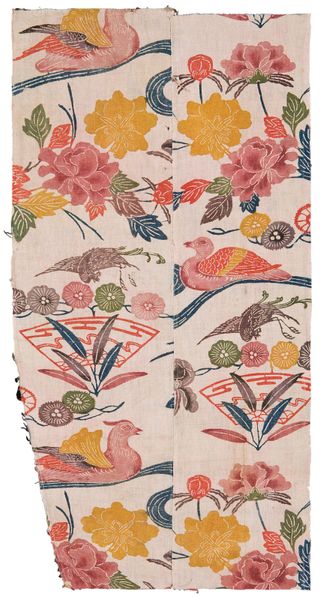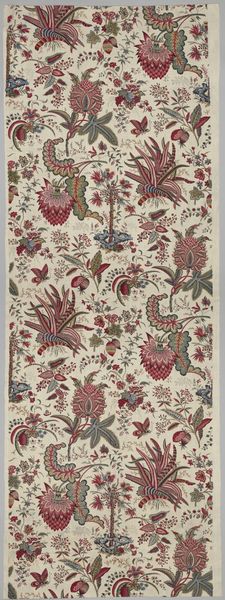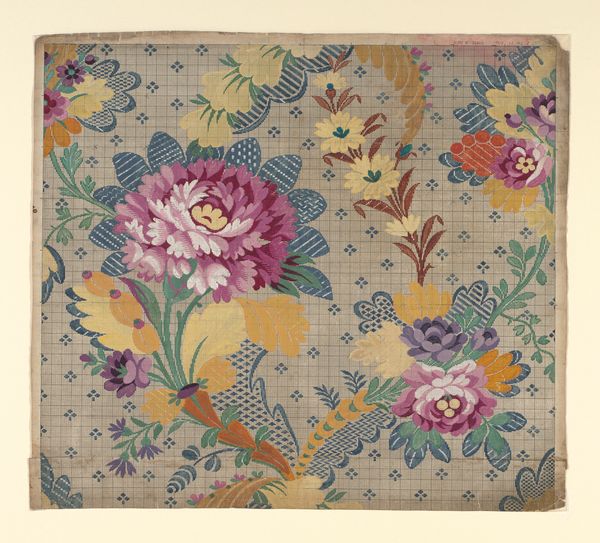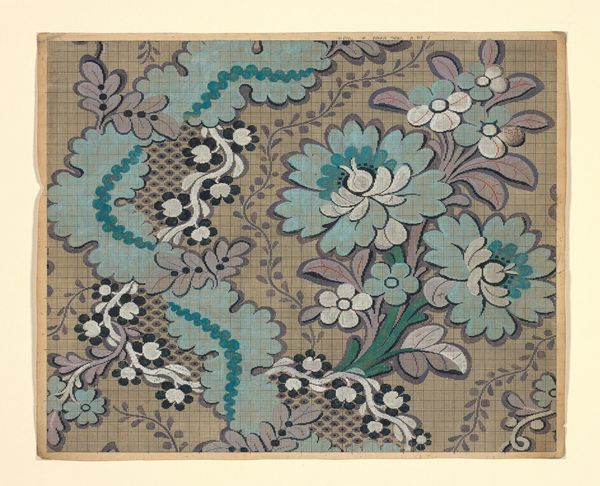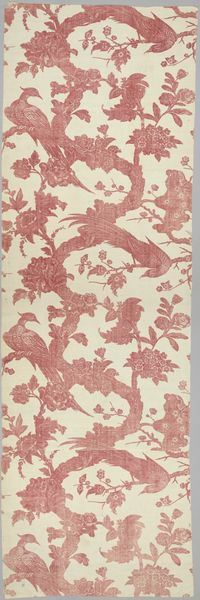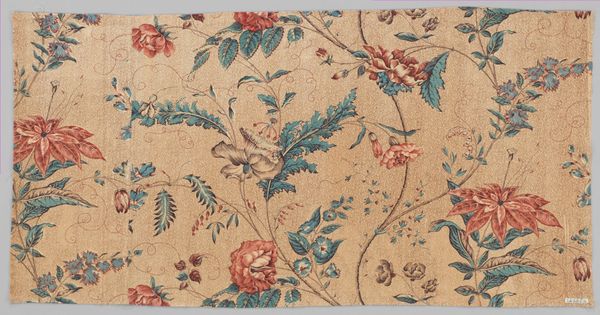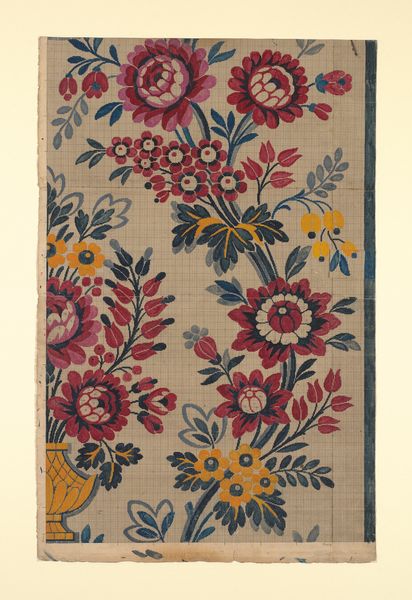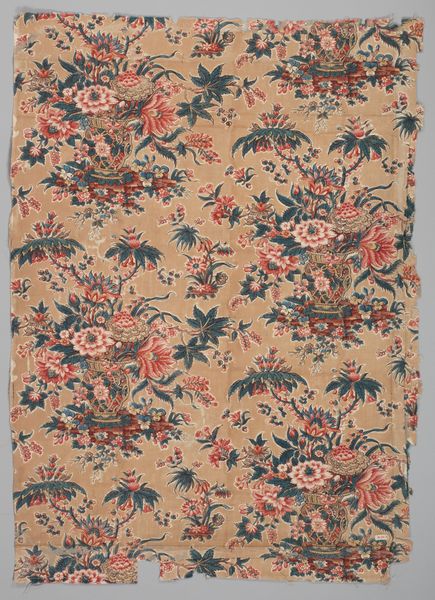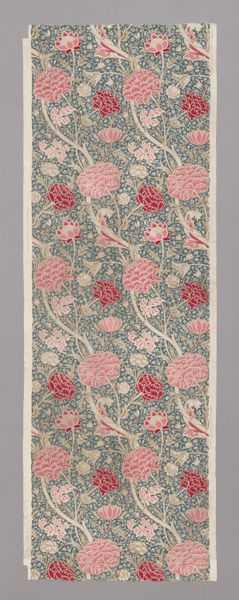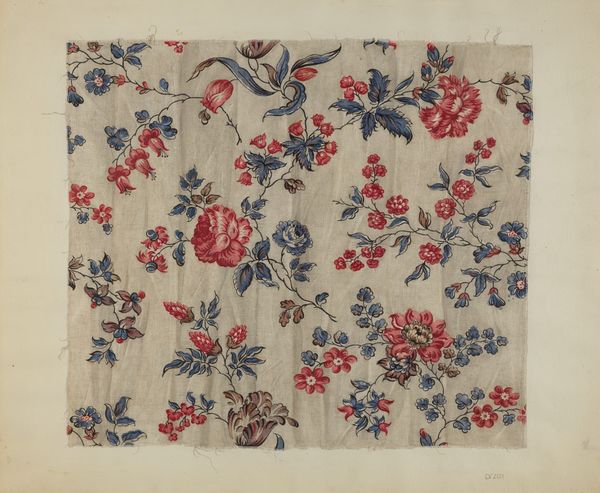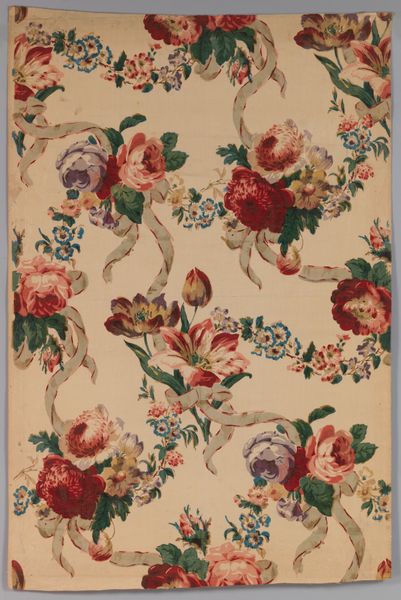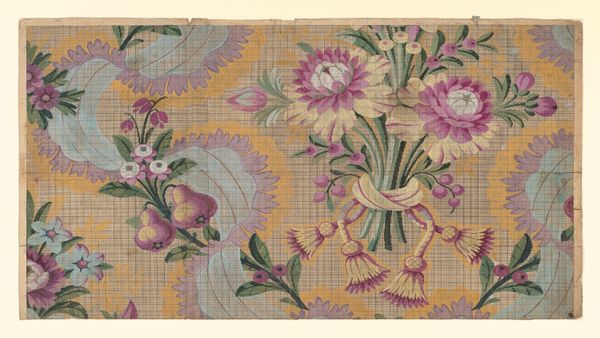
Fragment decorated with two similar patterns c. 19th century
0:00
0:00
fibre-art, silk, textile
#
pattern heavy
#
natural stone pattern
#
fibre-art
#
naturalistic pattern
#
silk
#
pattern
#
asian-art
#
textile
#
ukiyo-e
#
japan
#
hand-embroidered
#
pattern background
#
ethnic pattern
#
orientalism
#
watercolour bleed
#
textile design
#
decorative-art
#
imprinted textile
#
layered pattern
Dimensions: 15 1/8 × 12 3/4 in. (38.42 × 32.39 cm) (overall)
Copyright: Public Domain
Curator: Here we have a textile fragment, simply titled "Fragment decorated with two similar patterns," created circa the 19th century by an anonymous artist. It resides in the collection of the Minneapolis Institute of Art. Editor: It’s surprisingly muted for something so decorative, almost dreamlike. The composition is intriguing, those layered patterns and washes of color— it feels light but the density is compelling. Curator: Observe how the patterns, while distinct, maintain a consistent visual language. The recurring floral motifs, alongside the stylized waves, create a sense of rhythmic repetition, a structural harmony that pleases the eye. Editor: The waves definitely resonate; in Japanese art, water can represent purity, renewal, but also the unpredictable forces of nature. And the blossoms— plum, perhaps cherry— those speak volumes about ephemeral beauty and the cycle of life. Do you think this piece might have been part of a larger kimono? Curator: The piece does indeed feature fiber art and silk. Without precise provenance, pinpointing its exact origin is difficult, but the techniques employed suggest an element of hand-embroidered craft associated with textile production in the Orient during the late Edo or Meiji periods. Editor: Absolutely, the blend of naturalistic and geometric shapes adds an interesting tension. There’s a constant push and pull between control and spontaneity that must carry some cultural resonance, too. Perhaps relating to ideas of controlled freedom in garden design and Ukiyo-e tradition? Curator: A salient point, it could be that tension or dialogue enhances the intrinsic formal qualities, drawing attention to the interplay of texture, line, and color in the fiber, not merely representation. Editor: The symbolism hints at the fleeting nature of life and beauty. This is definitely a space for contemplating change. Curator: Precisely. It is a fine example of subtle color, complex repetition, and formal elegance, irrespective of symbolic intent. Editor: Seeing the piece broken down elementally brings another perspective. I’ll leave with a sense of transient life and the ever-changing nature of beauty represented.
Comments
No comments
Be the first to comment and join the conversation on the ultimate creative platform.
